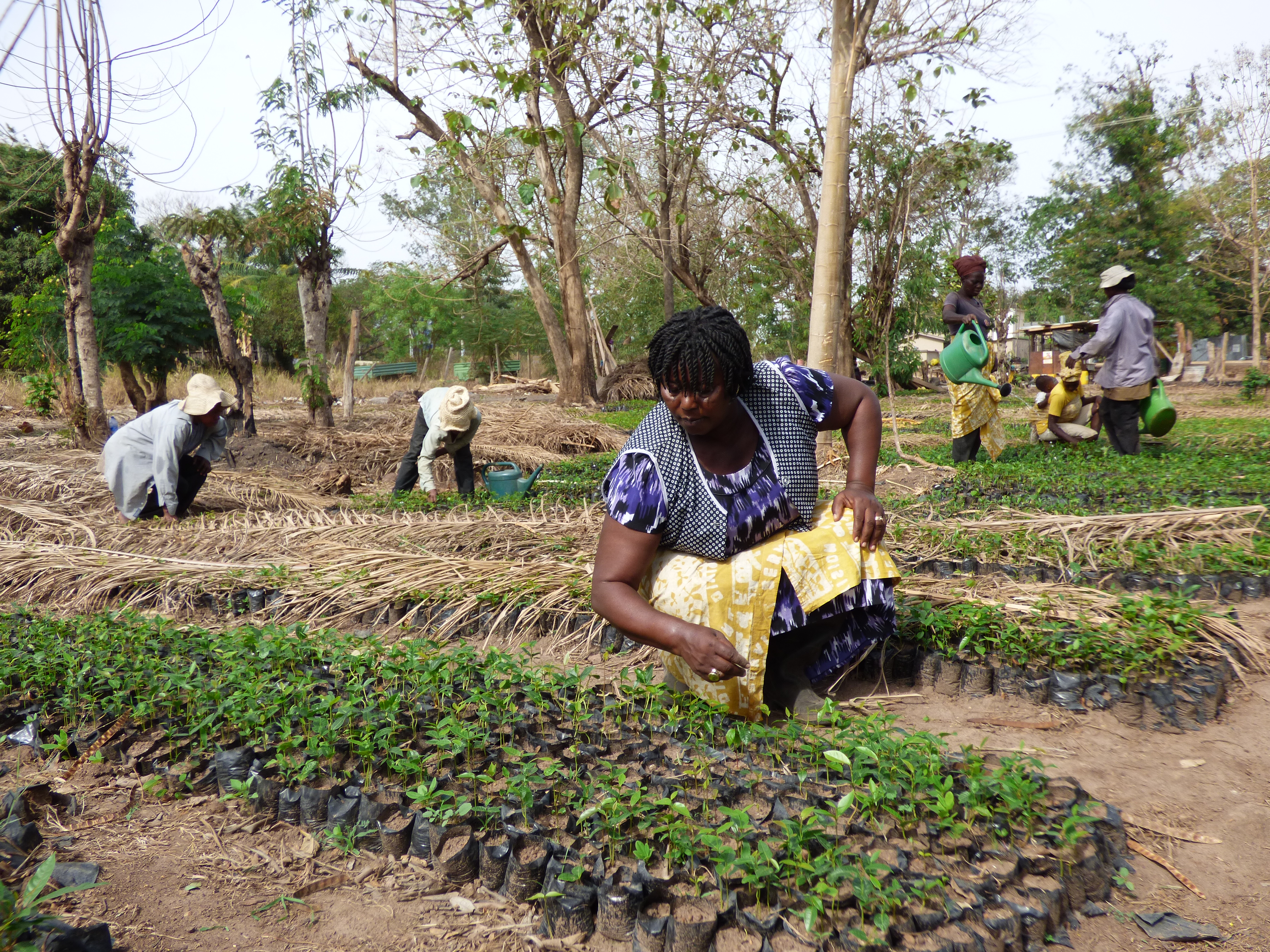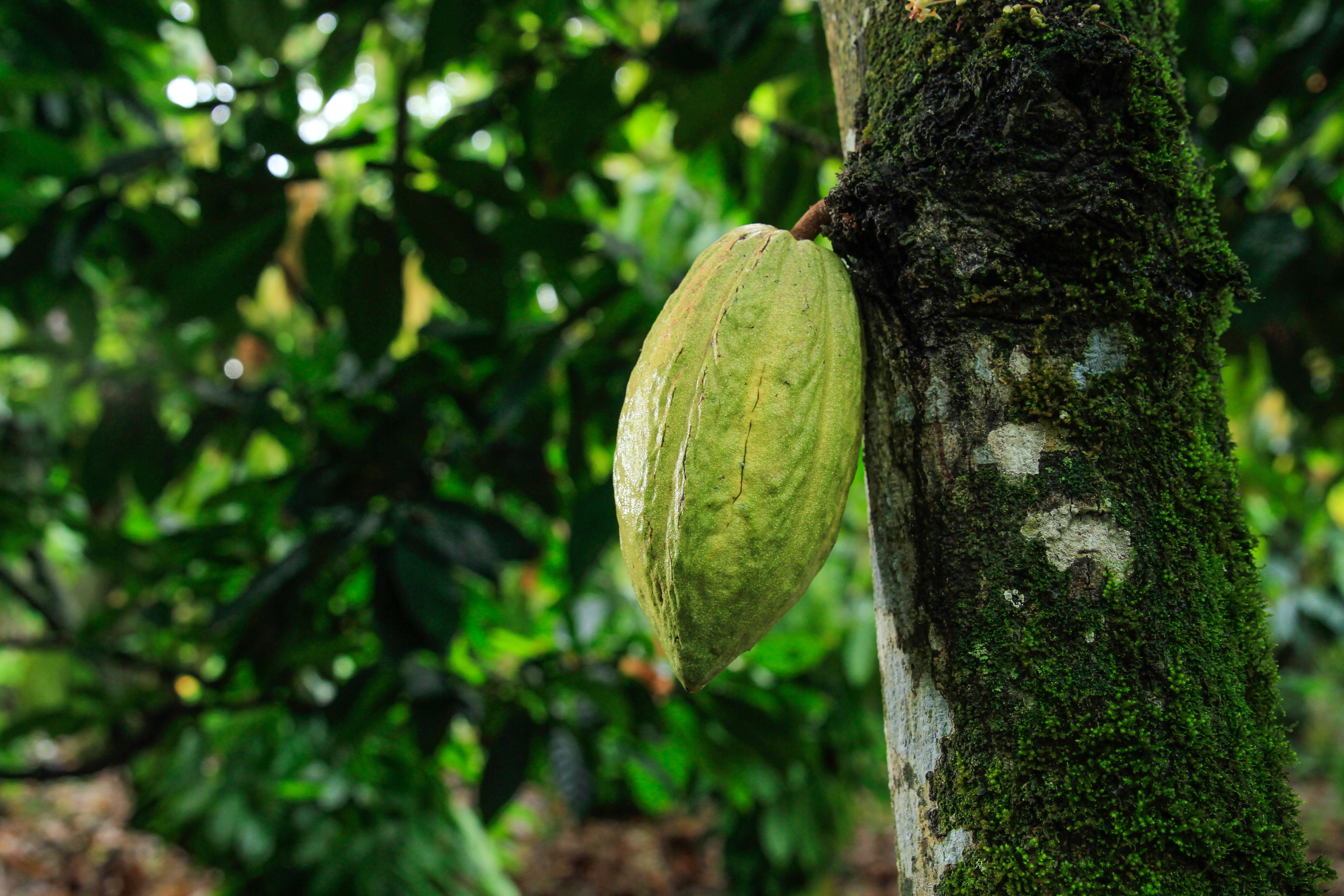Greening Natural Resource Governance on Multiple Levels at Once
The impact of UNDP on Green Commodities in Ghana
July 4, 2022

Women in Cocoa
Mensah* is standing among his cocoa trees. A thick layer of leaves covers the damp ground, where ants and beetles make their way around his feet. «The shade trees have increased the yields», Mensah says. «The shade provided by the trees reduces the evaporation from the soil and thus improves the water availability for the cocoa, especially during the dry season», he continues. Mensah is one of the beneficiaries of the Cocoa Life Project, an initiative by Mondelēz, where the environment pillar is implemented by the United Nations Development Programme (UNDP) and the Ghana Cocoa Board (COCOBOD). I met him whilst travelling in Ghana on a Mercator Fellowship – what follows is my personal appreciation of the impressive range of activities I saw. If I had one conclusion, it was how difficult it is to keep everything going on multiple levels all at once, but somehow this happens.
The Cocoa Life Project has enabled smallholder farmers to plant shade trees on their farms. The shade trees increase the cocoa yields not just through improving the water retention capacity of the soils, but also because cocoa trees actually don’t like the broad daylight. Another benefit for the smallholder farmers, you would think, is when the trees can be harvested for timber. So it might seem logical for smallholder cocoa farmers to have shade trees on their land. However, land-use rights in Ghana have so far rather promoted the opposite. All natural resources belong to the state, unless, specifically in the case of timber, you are able to prove that you have nurtured and cared for the tree, which is often not easy to do for smallholder farmers. Sometimes timber companies come and cut down trees on farms close to their concessions, causing devastation on the farming plots. Unable to legally harvest the timber themselves and afraid of destruction caused by timber companies, the farmers, in some cases, resort to cutting down the trees on their plots by stripping their bark, rendering them worthless for the timber industry.
Not far away from Mensah’s plot of cocoa trees lies the Ayum Forest Reserve. Driving there, I passed by sawmill after sawmill and trucks loaded with huge logs. The boundary of the forest reserve is hardly recogniseable: From dense cocoa plantations a landscape of plantain plots appears, where the occasional tree has been left standing. In 2014, this was still all dense forest, I was told. While Ghana allows limited timber harvesting activities within forest reserves, and wildfires have taken their toll, the landscape we are now looking at is clearly no longer a forest. Looking closer, it becomes apparent that among the chaotically scattered plantain plants, there are perfect rows of young trees reaching for the sky. The Ayum Forest Reserve is subject to reforestation, just as the next truck passes full with logs. The approach of combining smallscale agriculture with reforestation is called the Modified Taungya System (MTS) in Ghana.
_________________________
*Not his real name

Cocoa in Ghana
Originally developed as the Taungya System in Myanmar (previously Burma), the way it works is that farmers are given a plot of land to farm on for 2-3 years, committing to also plant and nurture the tree seedlings. After five years, the trees will have formed a canopy. And after 25 years the plantation is ready for harvest. It was modified in Ghana to include a benefit sharing mechanism, by which the smallholder farmers and communities/traditional authorities would also get a certain amount of the revenue when the trees are harvested. Typically 40% and 20%, respectively. The long time frame of the endeavour has its challenges: for one, there is a transition phase where farming is no longer possible on the plots (typically after three years) and until the canopy of the young trees closes (typically after five years). During this phase, the MTS sites are prone to overgrowth of weeds, which can easily catch fire in the dry season, thus destroying the efforts of earlier years. There are even allegations that some farmers deliberately lay the fires, to get access to the land to farm anew.
Another challenge is related to the fact that many organisations have discovered reforestation as an important activity and also apply the MTS to different extents. The differences in application, however, also poses problems. Farmers are confronted with differing requirements by the different organisations, which can lead to conflict. But many farmers also know how to navigate the different requirements and thus become double or triple beneficiaries, sometimes acquiring more land than they can reasonably cultivate. Better coordination among the different stakeholders could make sure that farmers are subject to comparable conditions and only acquire as much land as they can reasonably manage.
Stakeholders often work in silos. That makes it difficult to exploit synergies, and sometimes leads to duplication of efforts and conflicting approaches, despite having good intentions. Bringing together such a big and diverse group of stakeholders from government agencies and private companies to non-profit organizations is always a challenge, which is acknowledged by the stakeholders. It is fortunate that UNDP has wide-ranging experience with setting up such multi-stakeholder platforms for green commodities all over the world. The knowledge gathered during these endeavours has even been collected and distilled, free for all to use, in the new guide to Effective Collaborative Action.
So, after my experience in Ghana something is telling me, that be it on the landscape, regional, inter-landscape or national level – whatever the stakeholders wish – UNDP will find a way to facilitate the process and come to a result which is sustainable in all senses of the word.

 Locations
Locations